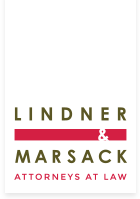By: Oyvind Wistrom
It has now been 50 years since the passage of the Civil Rights Act of 1964 and the creation of the Equal Employment Opportunity Commission. At its first meeting of the new year earlier this month, the EEOC Chair Jenny R. Yang, who presided over her first Commission meeting, pledged a renewed focus on curbing the persistent problem of workplace harassment. “By identifying underlying problems in workplaces and industries where we see recurring patterns of harassment, we are developing strategies that focus on targeted outreach and education, as well as systematic enforcement to promote broader voluntary compliance,” Yang said in her remarks.
In order to achieve the goal of reducing workplace harassment, the EEOC will create a task force that will convene experts from the employer community, workers’ advocates, human resources experts and academics in an effort to identify effective strategies that will help prevent harassment in the workplace and to ensure that employees understand their right to work in a harassment free environment.
As this task force is launched, it is now more important than ever for employers to ensure that they are doing everything possible to avoid harassment charges and to ensure that the EEOC’s enforcement initiative will be targeted elsewhere. What can you do now?
Harassment Policy: Ensure that your harassment policy is current and in compliance with state and federal law. Among its provisions, the harassment policy should specifically identify the types of harassing conduct that is prohibited under the policy; it should provide for an effective method for employees to report incidents of harassment; it should provide for a prompt and effective remedial investigative process; and it should stress that retaliation against those that report harassment will not be tolerated.
Communication: The dissemination of your harassment policy is equally important. It should be posted electronically, if possible, and also included in your employee handbook and policy manual. It should be disseminated to all new employees, along with a signed acknowledgement form confirming they received the handbook and the harassment policy.
Training: All employers should consider periodic harassment training in the workplace. This is important to instill in the workplace and upon supervisors that harassment of any sort will not be tolerated and will be met with swift and effective punishment. Training is also critical to ensure that management personnel understand the parameters of the law and their responsibility to report incidents and complaints of harassment brought to their attention.
Effective Investigation: If a complaint is received, it is critical that the complaint be promptly addressed, which may include suspending the alleged harasser or separating the victim from the harasser. The investigation should be conducted by someone who can be impartial and should include interviews with everyone with knowledge about the allegations, ensuring that witnesses with first-hand information is distinguished from gossip and rumors. Whatever punishment is imposed on the alleged harasser, it must be effective in remedying the situation and stopping the alleged harassment.
As was once famously said, “an ounce of prevention is worth a pound of cure.” This is the time for your company to do everything possible to ensure that if the EEOC’s new enforcement initiative is directed at you, your company is in the best possible position to defend itself.
